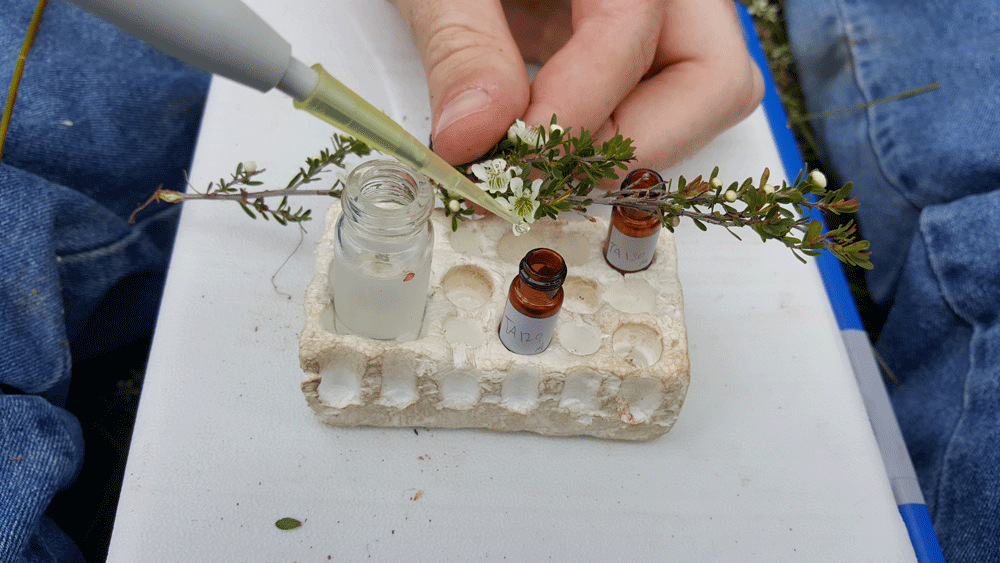
I thank Simon Williams (USC Honey Research) for the below explanation and useful guide which carries a proviso;
This calculation is included for interest only and is for the best case pure, mono-floral honey. Part of this project’s overall goal is to help understand this better!!
DHA ppm is DHA parts per million parts of sugar. Honey is approx. 85% sugar. We know approx. 40% of DHA disappears over 1 year and approx. 40% of that goes to MGO. Therefore we multiple DHA by 0.85 x 0.4 x 0.4 to give a VERY ROUGH indicator of expected MGO (expressed as ppm or mg/kg) in honey-based on nectar DHA values. This can be summarised by DHA x 0.136.
Grading System Explained (NZ) with Calculator
Nectar sampling from wild communities of Leptospermum scoparium throughout Victoria and Tasmania routinely test at average levels of DHA 2,000 ppm thus indicating potential MGO levels of >260 mg/kg. This is roughly the same as New Zealand.
These levels of bioactivity are considered by the University of Technology, Sydney (UTS) to be useful for medical purposes. (UMF 10+)
More detailed sampling in 2016 (in Leptospermum scoparium) has found individuals within wild populations with DHA levels in the range 6,000 – 7,000 ppm. This will provide projected MGO levels of >800 mg/kg which is definite medical grade honey (UMF 20+) and described by UTS as the highest concentrations achievable. (see published article)
A selection and breeding program has already commenced which will involve the establishment of seed orchards for the potential development of a national plantation resource.
But wait there is more!
More detailed 2016 testing of Leptospermum polygalifolium from selected wild populations in SE Queensland has further confirmed DHA (Dihydroxyacetone) levels of 10,000 to 12,000 ppm which could potentially produce highly concentrated MGO (Methylglyoxal) honeys that are significantly off-scale with the potential for further increases by selection and breeding. (also planned for 2017 and beyond)